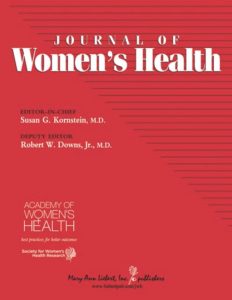Publications

Women with Chronic Pelvic Pain Demonstrate Increased Lumbopelvic Muscle Stiffness Compared to Asymptomatic Controls
Authors: Laurel Proulx 1, Kelli Brizzolara 2, Mary Thompson 2, Sharon Wang-Price 2, Patricia Rodriguez 3, Shane Koppenhaver 4
Affiliations:
- School of Physical Therapy, Rueckert-Hartman College of Health Professions, Regis University, Denver, Colorado, USA
- Texas Woman’s University, Dallas, Texas, USA
- Audi Murphy Veteran’s Hospital, San Antonio, Texas, USA
- Baylor University, Waco, Texas, USA
Journal: Journal of Women's Health - February 2023, Volume 32, Issue 2, Pages 239-247 (DOI: 10.1089/jwh.2022.0198)
-
Field & Applications:
- Medical
- Musculoskeletal disorder
- Women's health
Background: Although lumbopelvic muscle stiffness is commonly clinically assessed in women with chronic pelvic pain (CPP), it has not been objectively quantified in this population, and its association with other pain-related impairments has not yet been established.
Objective: To compare superficial lumbopelvic muscle stiffness in women with and without CPP. In addition, pressure pain threshold (PPT) was compared between groups and the associations between muscle stiffness and PPT were assessed in women with CPP.
Study Design: Case-control.
Methods: Muscle stiffness and PPT of 11 lumbopelvic muscles were assessed in 149 women with CPP and 48 asymptomatic women. Subjective outcome measures, including pelvic floor function, health history, and psychosocial outcomes, were collected before muscle stiffness and PPT measurements. Analysis of covariance was used to compare muscle stiffness differences between groups, and independent t-tests were used to compare PPT between groups. Associations between measurements of PPT and muscle stiffness were calculated using correlation analysis.
Results: Five of the 11 muscles measured were significantly stiffer in women with CPP than those without CPP (p < 0.05). PPT was significantly decreased in all muscles measured in women with CPP; however, there was not a significant association between muscle stiffness and PPT in women with CPP.
Conclusion: The study identified the abdominal lumbopelvic muscles that have increased stiffness in women with CPP compared to asymptomatic women. In addition, muscle stiffness and PPT are two distinct impairments within this population. The results suggest that women with CPP have peripheral muscle impairments, which may be addressed without intravaginal or intrarectal intervention.
Keywords: lumbopelvic pain, pelvic floor, myofascial pain, musculoskeletal, rehabilitation, physical therapy
Muscle stiffness, as measured by the MyotonPRO, was greater in the five extrapelvic muscles measured in women with CPP compared to asymptomatic women. The results suggest that women with CPP have peripheral muscle impairments which may be addressed without intravaginal or intrarectal intervention. In addition, the CPP cohort demonstrated decreased PPT on the majority of muscles measured. However, increased muscle stiffness did not correlate with PPT measurements of these same muscles, suggesting distinct impairments of increased muscle stiffness and sensitivity. These findings indicate that extrapelvic muscle stiffness, a commonly prioritized impairment in women with CPP, may not be a pain precipitating impairment in this population. Further research is needed to assess the impact of extrapelvic muscle stiffness on pain and function within this population. In addition, research investigating the effects of interventions aimed at improving muscle stiffness in women with CPP is warranted to improve the understanding of CPP.


